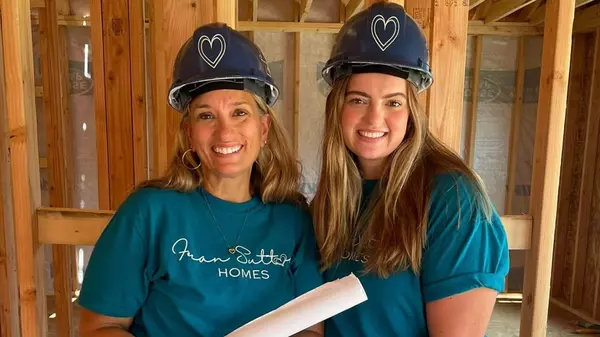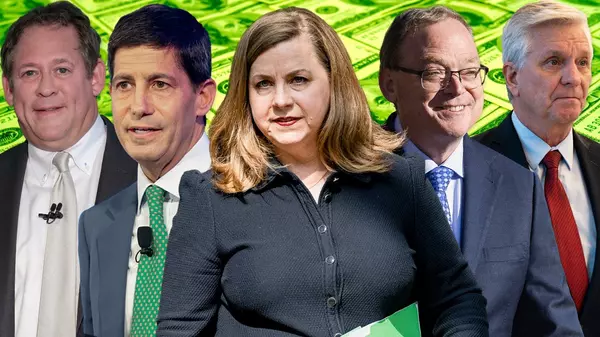The Fed Just Cut Rates—Will Mortgages Ever Fall to 3% Again?
For the first time in nine months, the Federal Reserve just cut its benchmark interest rate by a quarter percentage point, bringing the central bank's rate down to a range of 4% to 4.25%.
It's a highly anticipated and hotly contested move, as President Donald Trump has repeatedly called on Fed Chair Jerome Powell to reduce borrowing costs for beleaguered homebuilders and buyers, many of whom long for the days just a few years ago when benchmark rates were close to zero.
Mortgage interest rates dropped below 3% for the first time in 2020, eventually hitting an all-time low of 2.65% in January 2021. It was a once-in-a-generation moment, one that caused an equity boom for millions of Americans.
But while the Fed's decisions are sure to bring some relief to homeowners, homebuyers, and sellers, don’t count on a 3% interest rate happening again anytime soon.
“The unprecedented conditions that triggered these historically low rates are not likely to be repeated,” says Hannah Jones, senior economic research analyst at Realtor.com®. “It is unlikely that rates will drop to 3% in the foreseeable future.”
Still, millions of homebuyers are holding out hope that mortgage rates might return to the lows during the COVID-19 pandemic era. The reality, according to economists and mortgage professionals alike, is that waiting for those rates to return might cost more than it saves.
A pandemic-era anomaly: How rates fell so low
“The 3% rates from a few years ago were an abnormality, not normal market conditions,” says Carlos Scarpero, a mortgage broker at Edge Home Finance. “Unprecedented and not a normal market.”
So how did we get there?

In March 2020, as the coronavirus pandemic shut down businesses and upended the economy, the Federal Reserve slashed interest rates to near zero. It was the most dramatic move by the central bank since the 2008 financial crisis, and it had an immediate ripple effect on mortgage rates.
At the time, mortgage rates were already trending low due to the lingering effects of the 2008 housing collapse. But after the Fed’s emergency intervention, rates plummeted even further. By summer 2020, they had dipped below 3%. Then, in January 2021, the average 30-year fixed mortgage rate hit a record low of 2.65%.
Could 3% rates ever return?
The Fed's most recent cut has already largely been priced into mortgage rates, bringing them to an 11-month low of 6.35% ahead of the Fed's decision. Whether they drop further will depend on the Fed's future actions, but many economists don't expect them to dip below 6%.
That's unwelcome news for house hunters hoping to return to the days of the 3% mortgage.
The era of ultralow mortgage rates fueled a housing boom not seen since before the 2008 crisis. Cheap borrowing costs gave millions of buyers access to homes that might have otherwise been out of reach.
While anything is possible in theory, the experts we spoke with say a return to 3% mortgage rates is highly unlikely without another major economic shock.
“Rates as low as we saw during the pandemic are very unlikely,” says Michael Merritt, senior vice president at BOK Financial. “It would take a dramatic economic event similar in scale to the pandemic or the financial crisis to push rates that low again.”
Kevin Leibowitz, president and CEO of Grayton Mortgage, agrees: “There will be a very low probability—close to zero in the near term. We’ll have to wait until the next major crisis, which I really don't want.”
One key reason? The Federal Reserve remains committed to fighting inflation, which has proven to be a persistent thorn in the central bank's side. The August consumer price index rose 2.9% year over year, up 0.4% from the prior month.
Fighting inflation as sticky as that will mean keeping benchmark interest rates well above zero—the same zero-bound territory that helped drive mortgage rates below 3% in 2020 and 2021. And without another black swan event, the Fed has little incentive to slash rates to the levels needed for mortgages to return to record lows.
And even if those rates did return, they’d come at a steep cost: widespread economic pain.
Why hoping for 3% could backfire
It’s easy to see why many would-be buyers are sitting on the sidelines. More than 80% of mortgages today have sub-6% interest rates, and 3% rates are barely in the rearview mirror. But experts warn that playing the waiting game could be a costly mistake.
Staying out of the market in hopes of a rate drop that never comes can lead to missed opportunities: Rising home prices, rent increases, and inflation might outpace any future savings on interest. And if rates do fall sharply again, buyers could face an entirely different challenge: surging competition.
“If rates ever did drop to 3%, we would see a homebuying frenzy,” says Scarpero. “This would drive up prices even further.”
That scenario could leave many of today’s cautious buyers priced out of the market all over again.
Reframing expectations
The problem with true once-in-a-lifetime opportunities is that they happen, well, once in a lifetime—and it shouldn’t be the benchmark for your future. If you’re waiting for a 3% rate to return before buying a home, it might be time to shift your expectations.
“The reframe is the current rate is the reality rate,” says Scarpero. “And we just need to get used to it.”
That means making peace with higher borrowing costs and planning accordingly. You might end up with a smaller home or a longer commute than you originally envisioned. But buying a home is still one of the most powerful ways to build long-term wealth.
“Homebuyers should adjust their expectations to only purchase what they can afford based on current rates,” says Leibowitz. “Waiting for 3% to come back is a bad plan.”
In today’s market, there’s no room for wishful thinking. Flexibility and financial realism are the keys to getting ahead.
The bigger picture: It’s not just the rate
Yes, your mortgage rate matters—it affects your monthly payment and long-term costs. But it’s only one part of the equation.
“Mortgage rates are only one factor impacting housing affordability,” says Merritt. “Rising insurance costs and property taxes are [also] contributing to affordability issues.”
And then there’s the inventory crisis, which is perhaps an even bigger barrier than interest rates themselves.
“There just has not been enough new homes built since the financial crisis,” says Leibowitz. “The supply of homes isn't where it needs to be.”
Scarpero agrees: “The unaffordability issue has been there for a while, and most of it is due to lack of inventory and homebuilders not keeping up with demand.”
A 3% mortgage rate wasn’t normal. It was a gift of extraordinary economic circumstances. Waiting for it to return might mean missing out on the real opportunities happening right now.
Instead of chasing yesterday’s rates, focus on what today’s market can offer you: a stable place to live, the chance to build equity, and a home that reflects your life—not just your loan.
Categories
Recent Posts










GET MORE INFORMATION

